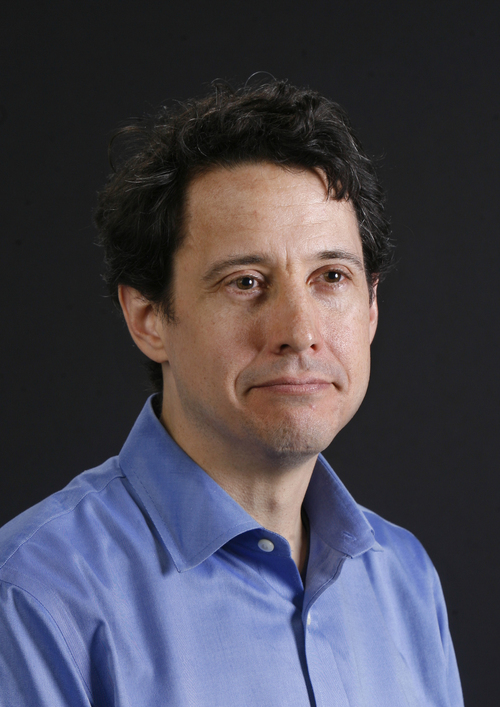This is an archived article that was published on sltrib.com in 2014, and information in the article may be outdated. It is provided only for personal research purposes and may not be reprinted.
Clayton, Mo. •
The St. Louis area has become embroiled in questions since the Aug. 9 shooting death of Michael Brown in the nearby suburb of Ferguson.
But newcomers and natives alike know the city has always been built on questions. Two come immediately to mind, even for newcomers such as myself.
"Are you from St. Louis?" is first.
If not, the conversation quickly turns to your hometown, and why you moved. Believe everything you hear about Midwestern hospitality. If friendliness is measured in minutes before a stranger shows you family photos on a cellphone screen, the average St. Louisan will get there in 10 minutes or less — regardless of color or social class.
Reveal yourself as a city native, and the second question becomes, "Where did you go to high school?"
This one-two punch of queries is almost ceremonial among St. Louisans. The tone is never less than friendly. After all, with those two questions out of the way you can move on to more vital topics, such as the Cardinals' last game.
To a relative outsider, however, they reveal the double-edged sword between friendly questions and ulterior interrogations deep at the heart of life in this amazing city. Everyone has his or her place of origin, and that origin tells. Few would be so unkind as to judge you personally, based on race or class. But in a strange way endemic to St. Louis and so many other U.S. cities, no one has to. Mechanisms have been in place for decades, if not centuries, for neighborhoods, school districts and other civic institutions to sort that out for you, and everyone else.
It's all baked deep into the city's history, from Missouri's status as a slave state before the Civil War, when Confederate "bushwhackers" in the rural areas did battle with Union sympathizers in St. Louis, to the egregious disparity among public school districts that feed another dividing line when parents instead send their children to private or parochial schools.
Historians agree St. Louis is home to the first "gated communities," these days relegated to "buffer neighborhoods" or boundaries between the rich (read "white") and poor (read "black"). Drive almost anywhere in St. Louis proper and you'll see them or, depending on the confidence of residents, their remnants: castle-like turrets or brick blocks for swinging, cast-iron gates announcing that, past a certain point, people don't want to be bothered.
To move from Salt Lake City to St. Louis is to transition from a community where people distinguish one another along lines of what they believe about the afterlife, to a place where people separate themselves in the here and now in myriad ways.
As hometown of cultural luminaries such as Chuck Berry and T.S. Eliot, whose grandfather William Greenleaf Eliot founded Washington University, where my wife and I both work, St. Louis is far more diverse than our hometown of Salt Lake City. Orthodox Jews stroll the sidewalks of University City on Saturdays. The African-American community hosts first-class cultural institutions, such as theater productions by St. Louis Black Repertory Co. It's home to a thriving Bosnian community. Once you get over bouts of homesickness for Salt Lake City's mountain range, it's fantastic.
Friends voiced worries once we announced our move. "I could never live in a city so segregated," was common. "It's segregated," I'd reply, "But is that worse than homogenous?"
There are bragging rights for the taking among white, progressive St. Louis families who flaunt these lines to send their children to school districts where the majority of students are black. For parents such as myself — who've instead studied the district lines and real estate for a spot in the Clayton School District — soul-searching becomes inevitable. At what point am I an accomplice? How comic, or tragic, is it that my daughter's school hosts a Black History Night, but its number of black students is nominal?
No personal hand-wringing compensates for the sight of war-torn streets, chanting protesters, firebombs and the sight of faces doused in milk to stanch the scalding burn of tear gas. Among the countless "deep reads" on the Ferguson crisis, many point to the worrisome trend of a more militarized police force across our nation's municipalities. But racism is a sub-set of fear. Fear is bred by distrust. And distrust thrives best when people live apart.
During a demonstration Wednesday outside the office of St. Louis County Prosecuting Attorney Robert McCulloch, more than 100 protesters demanded McCulloch relinquish to an outside prosecutor the case accusing Ferguson Police Officer Darren Wilson of shooting Brown. Given McCulloch's deep ties to law enforcement, they hope such a move will result in a better chance for justice.
Rev. Stanton Holliday, a resident of Alton, Ill., who drove to the seat of power in St. Louis County located in the municipality of Clayton, wasted no time speaking his truth to power. At 62, he said he's seen more than enough police brutality against members of his community, both in Missouri and across the state line in southern Illinois.
"After 150 years, no institution is more racist than our nation's criminal justice system," Stanton said, looking at a phalanx of 31 officers (two of them black) guarding the towering Buzz Westfall Justice Center housing McCulloch's office. "There's probably a murderer standing over there in that line-up even as we speak."
Ben Fulton is a former Salt Lake Tribune reporter who moved last year to the St. Louis area with his wife and daughter.



